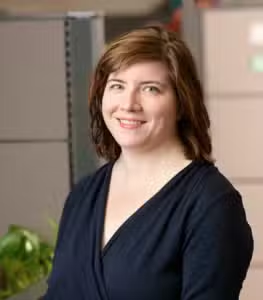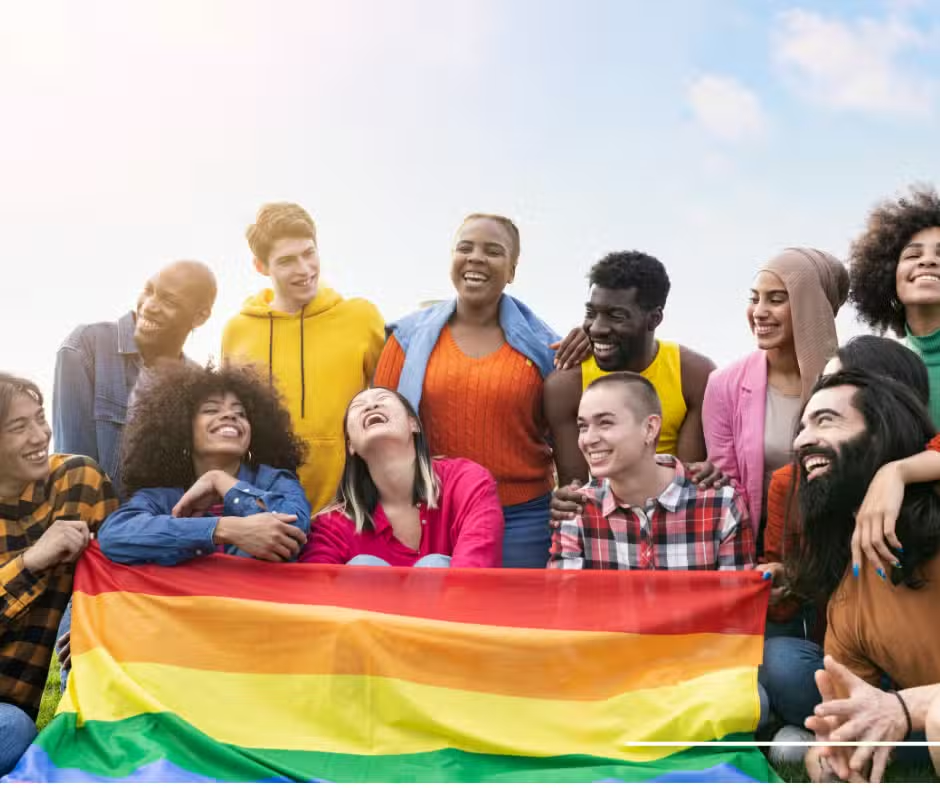By Nora Biette-Timons
Earlier this summer, throughout the month of June, we celebrated the joy of queerness, the joy of embracing one’s authentic self and sexuality. We hold this love and delight in our hearts throughout the year—but we also remember that public Pride celebrations did not come easily: Queer existence has a painful history, and the fights for equality and recognition are far from over.
Throughout these fights, queer widows and widowers have told stories of the saddest moments of their Flives: They were even more helpless than straight people facing the loss of a spouse, because as their partners were dying, they had no legal rights to make decisions. They were helpless in the face of death, as we all are, but also in the face of discrimination, which was legal until all too recently.
 Though queer acceptance has come a long way in the past 25 years, and the scale of these problems has lessened — sometimes significantly — after the Supreme Court upheld Obergefell in 2015, they do still exist. Social and cultural attitudes remain prejudiced, and, as a result, many bereaved queer people experience disenfranchised grief; “grief that is not seen as legitimate or meaningful by society or others in their social network,” says Dr. Kailey Roberts, a psychology professor whose research specializes in bereavement and palliative care. This can show up as dead partners being referred to as “friends”; families leaving same-sex partners out of the mourning process because they disapprove; or workplaces not recognizing these kinship ties and refusing to grant time off.
Though queer acceptance has come a long way in the past 25 years, and the scale of these problems has lessened — sometimes significantly — after the Supreme Court upheld Obergefell in 2015, they do still exist. Social and cultural attitudes remain prejudiced, and, as a result, many bereaved queer people experience disenfranchised grief; “grief that is not seen as legitimate or meaningful by society or others in their social network,” says Dr. Kailey Roberts, a psychology professor whose research specializes in bereavement and palliative care. This can show up as dead partners being referred to as “friends”; families leaving same-sex partners out of the mourning process because they disapprove; or workplaces not recognizing these kinship ties and refusing to grant time off.
This lack of being seen by and understood exacerbates loss for bereaved LGBTQIA+ individuals, Roberts says. As a man named George Seabold wrote in Gay Widowers: Life After Death of a Partner, an anthology published in 1997 specifically to help bereaved gay men, his grief over the death of his partner was further isolating because, at the time, he was not publicly out.
For many reasons — from historic marginalization to community bonds — the concept of “chosen family” is particularly strong for LGBTQ+ people. As Roberts puts it, “‘family’ includes not only biologically or legally related kin, but also [people] who are highly meaningfully connected and closely involved in each other’s lives but not bio-legally related.” An essay in ColorBloq, an online journal by and for queer and trans people of color, notes that “chosen family” is especially salient for LGBTQ+ people of color, who face disproportionate rates of social and economic isolation. Chosen family, “built on kinship with intentional demonstrations of love, shared history, material and emotional assistance, and enduring solidarity. [It] encompasses a network of social support, intimacy and identity.” These kin relations “are at the center of the activities that sustain a family built on social and cultural connections rather than legal and biological.”
***
Older generations, in particular, carry the scars of the AIDS crisis in the 1980s, which was for far too long largely ignored by governments, public health officials, and society writ broadly. While those memories do not exist for younger generations of queer folks, the horror of them has not disappeared. “The collective trauma of the HIV epidemic has been passed down through generations, but we rarely contend with it as a community,” researcher Alexander McClelland writes in Between Certain Death and Possible Future, a collection of essays analyzing the legacy — and current reality — of HIV/AIDS. “The grief and deaths of thousands of gay men, trans women, injection drug users, sex workers, immigrants, people of color, and other marginalized people were not taken seriously then, so how can the grief and fears of subsequent generations be taken seriously now?”
The painful history of HIV/AIDS echoes today as many older queer adults who lost partners and chosen families during the crisis in the 1980s and 1990s enter their later years. The “ongoing societal stigma associated with LGBTQIA+ identities” and the “lack of tailored and affirming resources can contribute to suffering and loss” in this community, Roberts says.
 This missing support has real, tangible health effects. Beyond disenfranchised grief, elderly queer patients, on average, face more health issues (mental, physical, and cognitive) and, on top of that, encounter barriers in healthcare settings that sometimes can lead to them avoiding treatment, thus hastening or worsening end-of-life outcomes. An analysis published earlier this year titled “Health disparities among LGBTQ+ older adults: challenges and resources, a systematic review” reported that, in comparison to their heterosexual counterparts, older lesbians and bisexual women have “heightened rates of overweight and cardiovascular disease” and gay and bisexual men have higher rates of angina, cancer, and diabetes.
This missing support has real, tangible health effects. Beyond disenfranchised grief, elderly queer patients, on average, face more health issues (mental, physical, and cognitive) and, on top of that, encounter barriers in healthcare settings that sometimes can lead to them avoiding treatment, thus hastening or worsening end-of-life outcomes. An analysis published earlier this year titled “Health disparities among LGBTQ+ older adults: challenges and resources, a systematic review” reported that, in comparison to their heterosexual counterparts, older lesbians and bisexual women have “heightened rates of overweight and cardiovascular disease” and gay and bisexual men have higher rates of angina, cancer, and diabetes.
This report said that evidence overwhelmingly suggests that these health issues are caused by the stigma (including internalized stigma) and isolation older queer people faced throughout their lives—and still face today. These problems can be worsened when they seek healthcare, where heterosexuality is the presumed norm, and doctors are often untrained on the specific issues LGBTQ+ elders face.
Some lawmakers have recognized this reality, and their efforts to solve it are ongoing. Sen. Michael Bennet co-sponsored legislation in 2017 to establish a National Resource Center on LGBT Aging, and in 2021, asked the Department of Health and Human Services for a briefing on the issues facing this population and urged the agency’s leaders to issue culturally competent guidance “to support LGBT older Americans receiving palliative and hospice care.”
***
The lack of full social acceptance and recognition also makes the grieving process more difficult, and forces the bereaved to grieve in private or to mask the full extent of their grief.
But when the death of a queer person is able to be marked and mourned in public, the way the deceased would want, it is something to be celebrated. The funeral for Cecilia Gentili — a trans woman, actress who appeared on “Pose,” sex worker advocate, and stalwart of New York City’s LGBTQ community — was a perfect example of the progress that’s been made, and the hurdles queer folks still face. Gentili died in February at age 52, and her funeral drew more than 1,000 mourners to St. Paul’s Cathedral, the same cathedral where gay activists once staged protests against the Catholic Church. While planning the service, her family kept her full identity “under wraps,” according to the New York Times, out of concern that the archdiocese would object to holding a funeral for a trans woman (and the archdiocese did indeed condemn the funeral after the fact). But the memorial itself celebrated Gentili’s true self, out in the open: Her family and chosen family attended — many in outfits described as more likely to be found at a fashion show than a funeral and it functioned, as the Times put it, as “a celebration of her life and an exuberant piece of political theater.”

